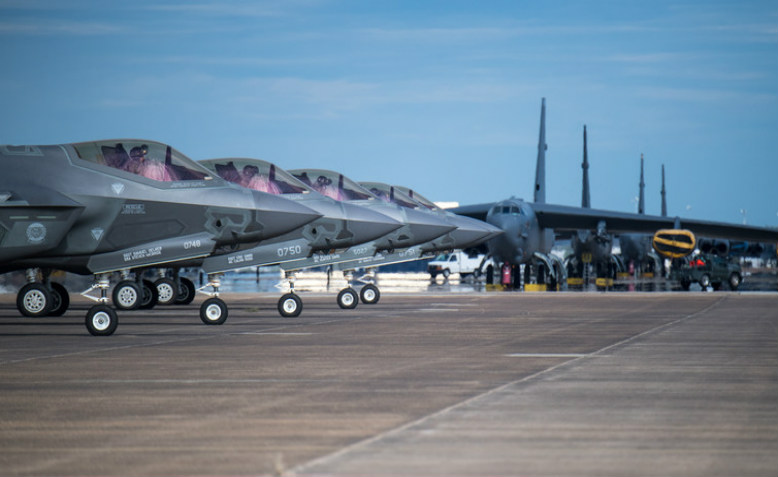 F-35 Lightning aircraft from Eglin Air Force Base. Photo: US Air Force
F-35 Lightning aircraft from Eglin Air Force Base. Photo: US Air Force
The sheer scale and perpetual nature of US military operations make it unimaginably destructive for the planet, argues Pete Morgan
The US military’s carbon footprint is enormous. Like corporate supply chains, it relies upon an extensive global network of container ships, trucks and cargo planes to supply its operations with everything from bombs to humanitarian aid and hydrocarbon fuels. A new study in the journal ‘Transactions’, which is one of the foremost international journals of geographical research, calculated the contribution of this vast infrastructure to climate change.
Greenhouse gas emission accounting usually focuses on how much energy and fuel civilians use. But recent work shows that the US military is one of the largest polluters in history, consuming more liquid fuels and emitting more climate-changing gases than most medium-sized countries.
In 2017, the US military bought about 269,230 barrels of oil a day and emitted more than 25,000 kilotonnes of carbon dioxide by burning those fuels. The US Air Force purchased US$4.9 billion worth of fuel, and the navy US$2.8 billion, followed by the army at US$947m and the Marines at US$36m.
The American military’s climate policy remains contradictory. There have been attempts to “green” aspects of its operations by increasing renewable electricity generation on bases, but it remains the single largest institutional consumer of hydrocarbons in the world. It has also locked itself into hydrocarbon-based weapons systems for years to come, by depending on existing aircraft and warships for open-ended operations.
Reposted from Sweet Talkin’ No.68 – 13-14 July 2019

